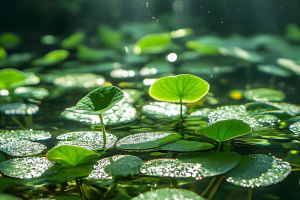Plant camouflage is the ability of certain plants to blend into their environment, often making them harder to detect by herbivores, insects, or even humans.
This phenomenon, also known as crypsis, allows plants to survive in challenging ecosystems by mimicking surroundings like rocks, soil, or other plants.
While camouflage is more commonly associated with animals like chameleons or moths, many plants have evolved surprisingly clever ways to stay hidden.
Why Do Plants Need to Camouflage?
Plants don't have legs to run or mouths to bite, so they've had to evolve other survival strategies. One of the most fascinating is camouflage. Some plants develop colors, textures, or shapes that help them disappear into the background, avoiding being eaten by hungry animals. In other cases, camouflage helps them trap prey, as seen in some carnivorous species. This passive defense mechanism can be especially important in ecosystems where competition for light and nutrients is intense.
Types of Camouflage in Plants
There are several forms of plant camouflage, each serving a unique purpose:
• Mimicry of Surroundings: Some desert plants look just like rocks or pebbles. For example, the "living stone" plant (Lithops) resembles small stones, making it nearly invisible to grazing animals.
• Color Matching: Plants may take on the color of the soil or dry leaves around them. This helps them disappear visually to predators.
• Imitating Other Plants: Some species imitate the look of more dangerous or less tasty plants, discouraging herbivores from nibbling on them.
Each strategy is a result of natural selection, with those plants better able to hide more likely to survive and reproduce.
Famous Examples of Camouflaged Plants
Let's look at a few standout examples:
• Lithops (Living Stones): These succulents from southern Africa resemble small rocks. Their unique coloring and shape help them hide from herbivores in dry, rocky environments.
• Orchids in the Rainforest: Some orchids mimic leaves or even insects. One species, Ophrys apifera, looks like a bee to attract pollinators.
• Boquila trifoliolata: This rare vine from South America can imitate the shape and color of the leaves of nearby plants. It's still not fully understood how it manages this trick, but it's one of the most impressive plant mimics known.
How Does Camouflage Develop in Plants?
Camouflage in plants is a result of evolutionary processes. Over many generations, mutations that allowed better blending into the environment gave those individuals a higher chance of survival. These traits were passed down and refined over time.
Plants that looked too obvious to predators were often eaten before they could reproduce, so their traits disappeared.
Researchers believe environmental pressures such as herbivory, climate conditions, and competition are key drivers of camouflage. The more hostile the environment, the more likely camouflage is to evolve.
How Is Camouflage Different from Other Defenses?
Camouflage is just one of many plant defenses. Others include:
• Thorns and spines: Like those on cacti or rose bushes, they physically deter animals.
• Chemical defenses: Some plants produce bitter or toxic chemicals.
• Rapid movements: While rare, some plants like the Mimosa pudica (sensitive plant) react to touch.
What makes camouflage unique is that it works passively and constantly. It doesn't require energy like movement or producing toxins. Once a plant's form has evolved to match its surroundings, it acts as a permanent shield.
Can Humans Use This Knowledge?
Absolutely! Understanding plant camouflage has practical uses:
• Agriculture: By learning how plants protect themselves, scientists can breed crops with better natural defenses.
• Conservation: Knowing which plants are camouflaged helps botanists locate and protect rare species that are hard to find in the wild.
• Biomimicry: Engineers and designers study camouflage for use in clothing, packaging, and even architecture.
Is Camouflage Always an Advantage?
Not necessarily. While camouflage can help a plant avoid predators, it can also make it harder for pollinators to find it. That's why many camouflaged plants also rely on strong scents or specific shapes to attract insects when it's time to reproduce. Nature is always about trade-offs, and plants have to balance being hidden with being noticed by the right creatures.
Ongoing Research on Plant Camouflage
Plant scientists continue to discover new species and uncover how plant camouflage works on a molecular and genetic level. For example, a 2021 study published in Current Biology explored how gene expression in mimic plants like Boquila changes based on what they are climbing on.
Experts such as Dr. Monica Gagliano, a plant behavior researcher, suggest that some plants may even respond to environmental signals in more complex ways than we once thought. This opens up exciting possibilities for future discoveries about plant awareness and adaptability.
Final Thoughts: Nature's Quiet Illusionists
Plants may not walk, talk, or chase down food—but many of them are master illusionists. The next time you walk through a desert or rainforest, take a closer look. That rock might not be a rock. That leaf might not belong to the tree next to it. Camouflage is nature's quiet way of saying: "I'm still here, even if you don't see me."
Have you ever spotted a camouflaged plant in nature? Share your observations or favorite examples—let's explore the hidden tricks of plants together!


